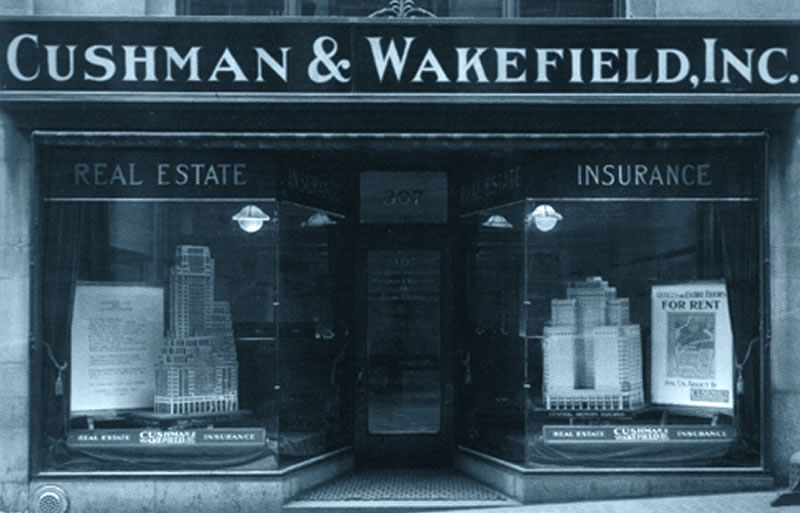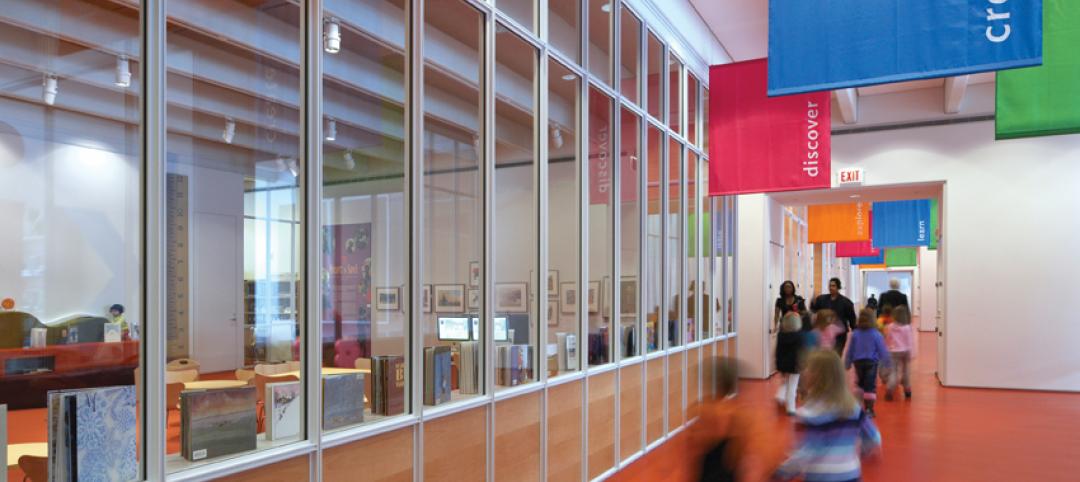DTZ, a leading global commercial real estate firm, has reached a definitive agreement to acquire Cushman & Wakefield from Exor for $2.04 billion. The merger would create a commercial real estate services company with over $5.5 billion in annual revenue, 43,000 employees, and more than 4 billion sf in its global real estate management portfolio.
The combined company intends to keep the Cushman & Wakefield name. The deal, which is subject to regulatory approval, is expected to be completed by the end of this year.
The DTZ-Cushman marriage would create a company whose revenue from brokerage fees roughly equals that of JLL, which has been the second-largest commercial real estate services entity behind CRBE.
Cushman & Wakefield, which was founded in 1917, has 259 offices in 60 countries. In April, it acquired J.F. McKinney + Associates, a leading leasing firm representing over 16 million sf of Chicago-area office space.
Chicago-based DTZ operates from more than 260 offices in 50 countries that completed $63 billion in transaction volume last year. DTZ reportedly has been interested in merging with Cushman for several years.
“It’s not just about size. It’s also about local expertise and deep customer service,” said Brett White, the former CRBE Chief Executive, who became DTZ’s Executive Chairman in March, and will be Chairman and CEO of the combined company.
The DTZ-Cushman marriage would create a company whose revenue from brokerage fees roughly equals that of JLL, which has been the second-largest commercial real estate services entity behind CRBE. According to The Wall Street Journal, CBRE’s 2014 revenue was $9 billion, JLL’s $5.4 billion.
Last November, a private equity consortium backed by TPG Capital, PAG Asia Capital, and Ontario Teachers’ Pension Plan, paid the Australia-based engineering firm UGL $1.1 billion to buy DTZ. At the time, DTZ was in the process of acquiring the New York-based commercial real estate brokerage Cassidy Turley. That deal was finalized in January, and the two firms were merged, creating a company with $2.9 billion in annual revenue, more than 28,000 employees, managing 1.9 billion sf of property and 1.3 billion sf of facilities for institutional, government, corporate, and private clients.
Exor SpA—which gets $1.28 billion in net proceeds from its part of the Cushman sale—is owned by the Agnelli family, reputedly the largest shareholder in Fiat Chrysler Automobiles. Exor has stated it plans to proceed with its merger with Axis capital Holdings.
Details about combining DTZ and Cushman—such as how market or portfolio overlaps will be reconciled—have yet to be disclosed. But the management team has already begun to take shape.
Once this deal is completed, Tod Lickerman, DTZ’s chief executive (and JLL’s former CEO), will become president of the new company. Cushman’s North America chief executive, John Santora, will hold titles of COO and chief integration officer. Carlo Barel di Sant’Albano, Cushman’s international chief executive, will take a senior global leadership role at the combined company. Edward Forst, Cushman’s CEO, is expected to leave the company.
Millbank, Tweed, Hadley & McCloy advised Cushman in this deal.
Related Stories
| Feb 11, 2011
Sustainable features on the bill for dual-building performing arts center at Soka University of America
The $73 million Soka University of America’s new performing arts center and academic complex recently opened on the school’s Aliso Viejo, Calif., campus. McCarthy Building Companies and Zimmer Gunsul Frasca Architects collaborated on the two-building project. One is a three-story, 47,836-sf facility with a grand reception lobby, a 1,200-seat auditorium, and supports spaces. The other is a four-story, 48,974-sf facility with 11 classrooms, 29 faculty offices, a 150-seat black box theater, rehearsal/dance studio, and support spaces. The project, which has a green roof, solar panels, operable windows, and sun-shading devices, is going for LEED Silver.
| Feb 11, 2011
BIM-enabled Texas church complex can broadcast services in high-def
After two years of design and construction, members of the Gateway Church in Southland, Texas, were able to attend services in their new 4,000-seat facility in late 2010. Located on a 180-acre site, the 205,000-sf complex has six auditoriums, including a massive 200,000-sf Worship Center, complete with catwalks, top-end audio and video system, and high-definition broadcast capabilities. BIM played a significant role in the building’s design and construction. Balfour Beatty Construction and Beck Architecture formed the nucleus of the Building Team.
| Feb 11, 2011
Kentucky’s first green adaptive reuse project earns Platinum
(FER) studio, Inglewood, Calif., converted a 115-year-old former dry goods store in Louisville, Ky., into a 10,175-sf mixed-use commercial building earned LEED Platinum and holds the distinction of being the state’s first adaptive reuse project to earn any LEED rating. The facility, located in the East Market District, houses a gallery, event space, offices, conference space, and a restaurant. Sustainable elements that helped the building reach its top LEED rating include xeriscaping, a green roof, rainwater collection and reuse, 12 geothermal wells, 81 solar panels, a 1,100-gallon ice storage system (off-grid energy efficiency is 68%) and the reuse and recycling of construction materials. Local firm Peters Construction served as GC.
| Feb 11, 2011
Chicago high-rise mixes condos with classrooms for Art Institute students
The Legacy at Millennium Park is a 72-story, mixed-use complex that rises high above Chicago’s Michigan Avenue. The glass tower, designed by Solomon Cordwell Buenz, is mostly residential, but also includes 41,000 sf of classroom space for the School of the Art Institute of Chicago and another 7,400 sf of retail space. The building’s 355 one-, two-, three-, and four-bedroom condominiums range from 875 sf to 9,300 sf, and there are seven levels of parking. Sky patios on the 15th, 42nd, and 60th floors give owners outdoor access and views of Lake Michigan.
| Feb 11, 2011
Grocery store anchors shopping center in Miami arts/entertainment district
18Biscayne is a 57,200-sf urban retail center being developed in downtown Miami by commercial real estate firm Stiles. Construction on the three-story center is being fast-tracked for completion in early 2012. The project is anchored by a 49,200-sf Publix market with bakery, pharmacy, and café with outdoor seating. An additional 8,000 sf of retail space will front Biscayne Boulevard. The complex is in close proximity to the Adrienne Arsht Center for the Performing Arts, the downtown Miami entertainment district, and the Omni neighborhood, one of the city’s fast-growing residential areas.
| Feb 10, 2011
7 Things to Know About Impact Glazing and Fire-rated Glass
Back-to-basics answers to seven common questions about impact glazing and fire-rated glass.
| Feb 9, 2011
Hospital Construction in the Age of Obamacare
The recession has hurt even the usually vibrant healthcare segment. Nearly three out of four hospital systems have put the brakes on capital projects. We asked five capital expenditure insiders for their advice on how Building Teams can still succeed in this highly competitive sector.
| Feb 9, 2011
Fortune 1000: Despite moral obligation to sustainability, cash is still king
Eighty-eight percent of Fortune 1000 senior executives feel business has a moral responsibility, beyond regulatory requirements, to make their companies more energy efficient, according to a new poll released today by Harris Interactive and commissioned by Schneider Electric. At the same time, the vast majority (61%) of respondents say that potential cost savings are their biggest motivator to save energy at the enterprise-level, outranking environmental concerns (13%) or government regulations (2%).
| Feb 9, 2011
Businesses make bigger, bolder sustainability commitments
In 2010, U.S. corporations continued to enhance their sustainable business efforts by making bigger, bolder, longer-term sustainability commitments. GreenBiz issued its 4th annual State of Green Business report, a free downloadable report that measures the progress of U.S. business and the economy from an environmental perspective, and highlights key trends in corporate culture in regard to the environment.
| Feb 9, 2011
Gen7 eco-friendly modular classrooms are first to be CHPS verified
The first-ever Gen7 green classrooms, installed at Bolsa Knolls Middle School in Salinas, California, have become the nation's first modular classrooms to receive Collaborative for High Performance Schools (CHPS) Verified recognition for New School Construction. They are only the second school in California to successfully complete the CHPS Verified review process.















